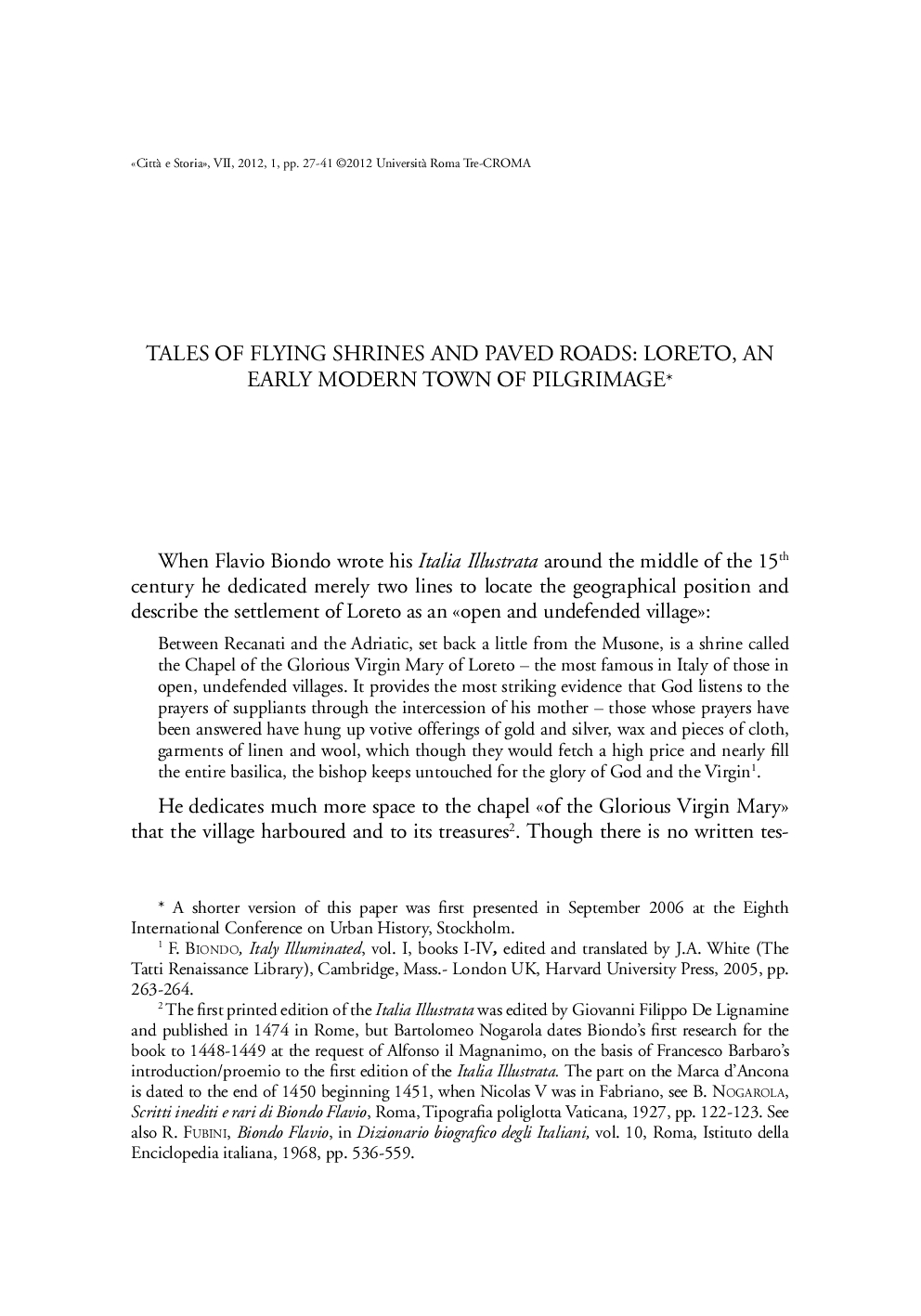Indice degli autori
CITTÀ & STORIA » 2012/1 » Tales of the City. Outsiders' Descriptions of Cities in the Early Modern Period
ISSN 1828-6364
Renzulli Eva
Tales of Flying Shrines and Paved Roads: Loreto, an Early Modern Town of Pilgrimage
pp.27-41, DOI 10.17426/47214
Articoli
Abstract: The village of Loreto developed around a brick chapel that was believed to be the House of Nazareth in which the Annunciation had taken place. Carried by angels, it had escaped the Holy Land as it fell to the Infidels at the end of the 13th century, choosing the Italian Peninsula as a sure refuge, and here had started working miracles thus attracting innumerable pilgrims. Points of view vary and tales range between reports of the religious experience and remarks of surprise in finding a city intended entirely for pilgrims. The idea of Loreto as a city that exploited pilgrimage, was even the subject matter of an irreverent rumour that is reported in his diary by the Venetian Marin Sanudo, in 1489, of a further miraculous flight of the church into the middle of the sea, and the overnight construction of a road to reach it, so as to avoid pilgrims from having to pay tolls to Ancona.

Referenze
- download: n.d.
- Url: http://archivio.centroricercheroma.it/?contenuto=indice-degli-autori&idarticolo=1004
- DOI: 10.17426/47214
- citazione: E. Renzulli, Tales of Flying Shrines and Paved Roads: Loreto, an Early Modern Town of Pilgrimage, "Città & Storia", VII/1, pp.27-41, DOI: 10.17426/47214

